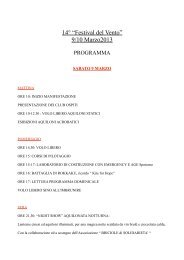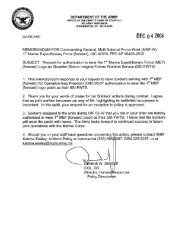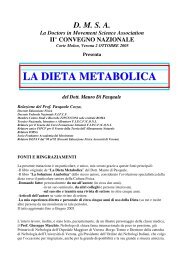Science vs. religion : what scientists really think - File PDF
Science vs. religion : what scientists really think - File PDF
Science vs. religion : what scientists really think - File PDF
Create successful ePaper yourself
Turn your PDF publications into a flip-book with our unique Google optimized e-Paper software.
206 NOTES TO PAGES 127–132Chapter 8Epigraph: Chem 17, conducted November 1, 2005.1. See Sagan, “Why We Need to Understand <strong>Science</strong>.”2. PS 24, conducted January 25, 2006.3. Psyc 22, conducted February 22, 2006.4. Psyc 40, conducted June 16, 2006.5. Psyc 28, conducted March 28, 2006.6. Such debates among secularists about how to respond to religious people arenot new. See Budd, Varieties of Unbelief . Budd argues that among atheists and agnosticsin late nineteenth-century English society, there was a strong disagreement betweensecularists about how to best advance the cause: militancy or respectability (withrespectability being to soften the message against <strong>religion</strong> in the hopes of making itmore widely accepted). Budd writes, “The strength of <strong>religion</strong> lay in its unexaminedconnections with every aspect of life, with its meaning as a label which marked off thechurch- goer . . . from those simply outside the understood pattern of life, excluded fromthe routine of Sunday school with buns and band, and funerals with ham. It was thisaspect of <strong>religion</strong> which was so baffling to the secularist. Religious beliefs could be combated;but the relations between religious practice and life in the community were sointimate that <strong>religion</strong> could not be made into a separate target” (37). Similarly, the mostsecular of <strong>scientists</strong> I interviewed often lamented that <strong>religion</strong> was not problematic aslong as it remained a personal, private belief system. It was when <strong>religion</strong> started influencingpeople in ways that motivated them to outward action—such as advocatingchanges in public policies that influence science—that it became most problematic.7. Bio 12, conducted August 19, 2005.8. Chem 8, conducted August 22, 2005.9. Here, social constructivist approaches to science—which focus on the ways inwhich science is influenced by power structures, ideologies, and actors within andoutside the scientific enterprise itself—are helpful in showing us that the way scienceresponds to other institutions (such as <strong>religion</strong>) is based in a community of actors.These actors or individuals have their own histories and ideologies that shape theirresponses to religious people. Some of their conceptions of <strong>what</strong> <strong>religion</strong> is mightneed to be reframed in order for them to more effectively engage with religious peopleand communities for the cause of science. Hess, in <strong>Science</strong> Studies , talks about theaspects of science that are socially constructed. Gieryn, in Cultural Boundaries of<strong>Science</strong> , mentions specifically that science is constructed within bounds. Sociologistsof science, then, should be concerned with uncovering the boundaries (and how theyare constructed and how they change) around <strong>what</strong> is inside of science and <strong>what</strong> isoutside of it.10. Bio 17, conducted September 9, 2005.11. Bio 27, conducted March 16, 2006.12. Bio 1, conducted June 17, 2005.13. Bio 20, conducted January 24, 2006.
















